

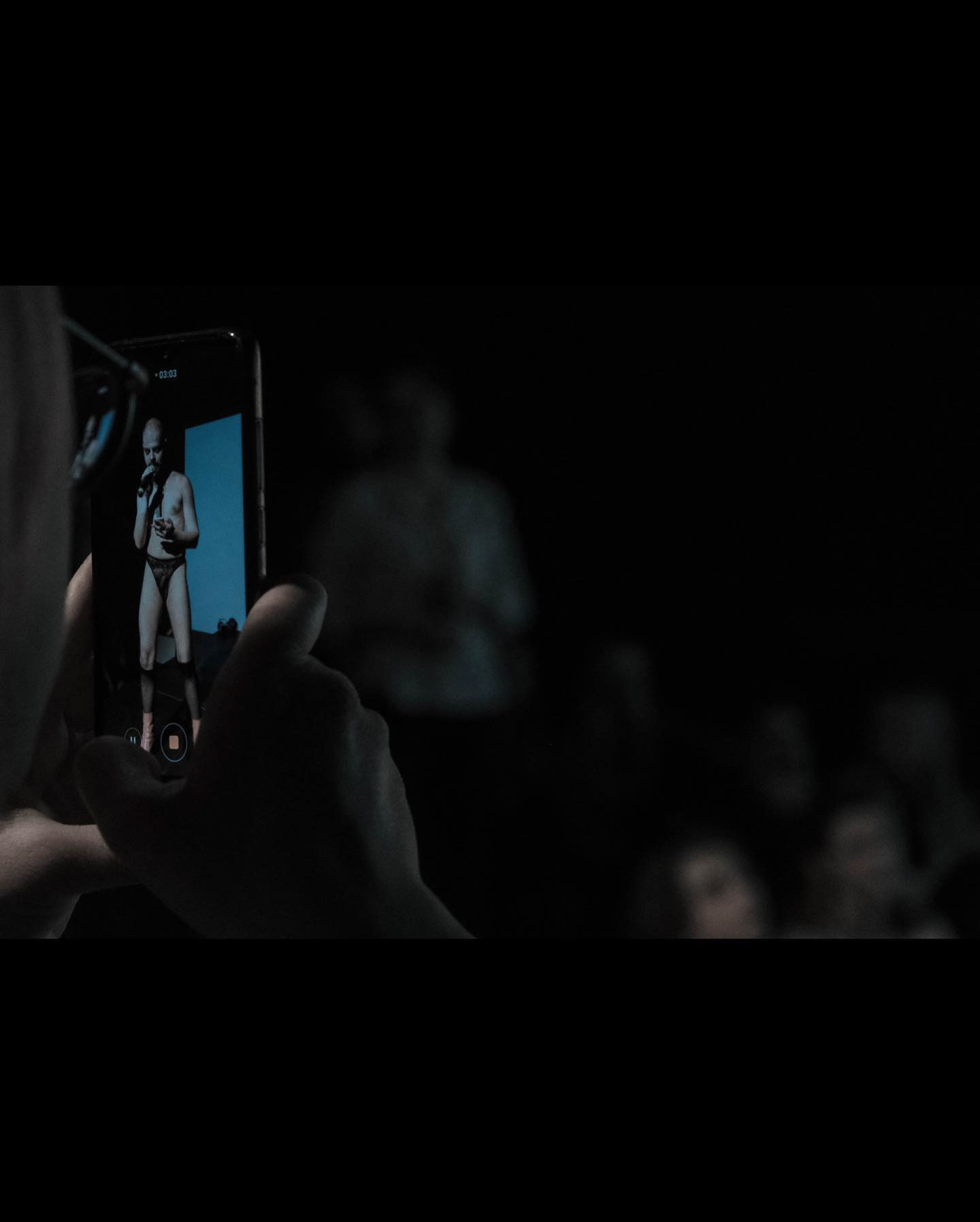



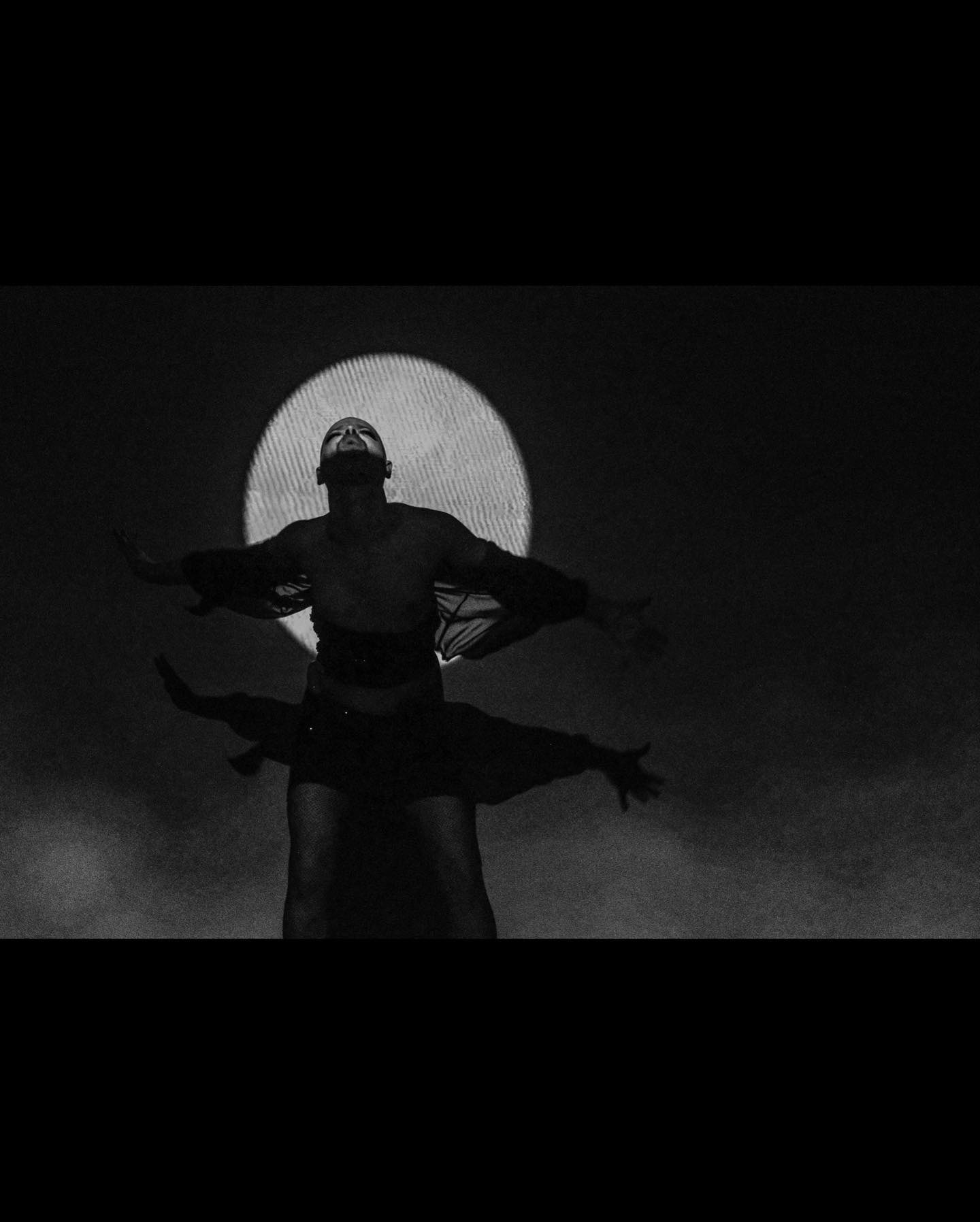
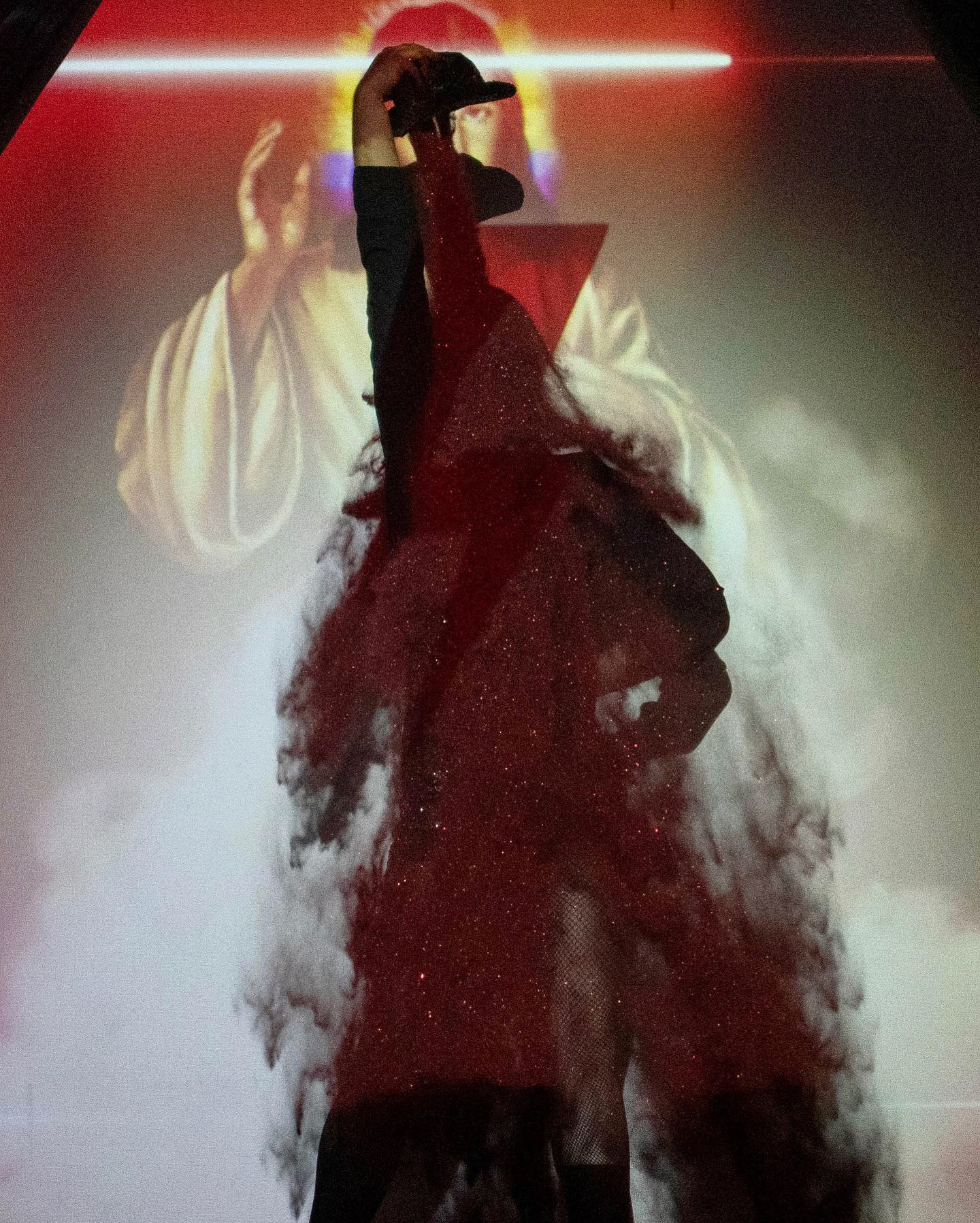
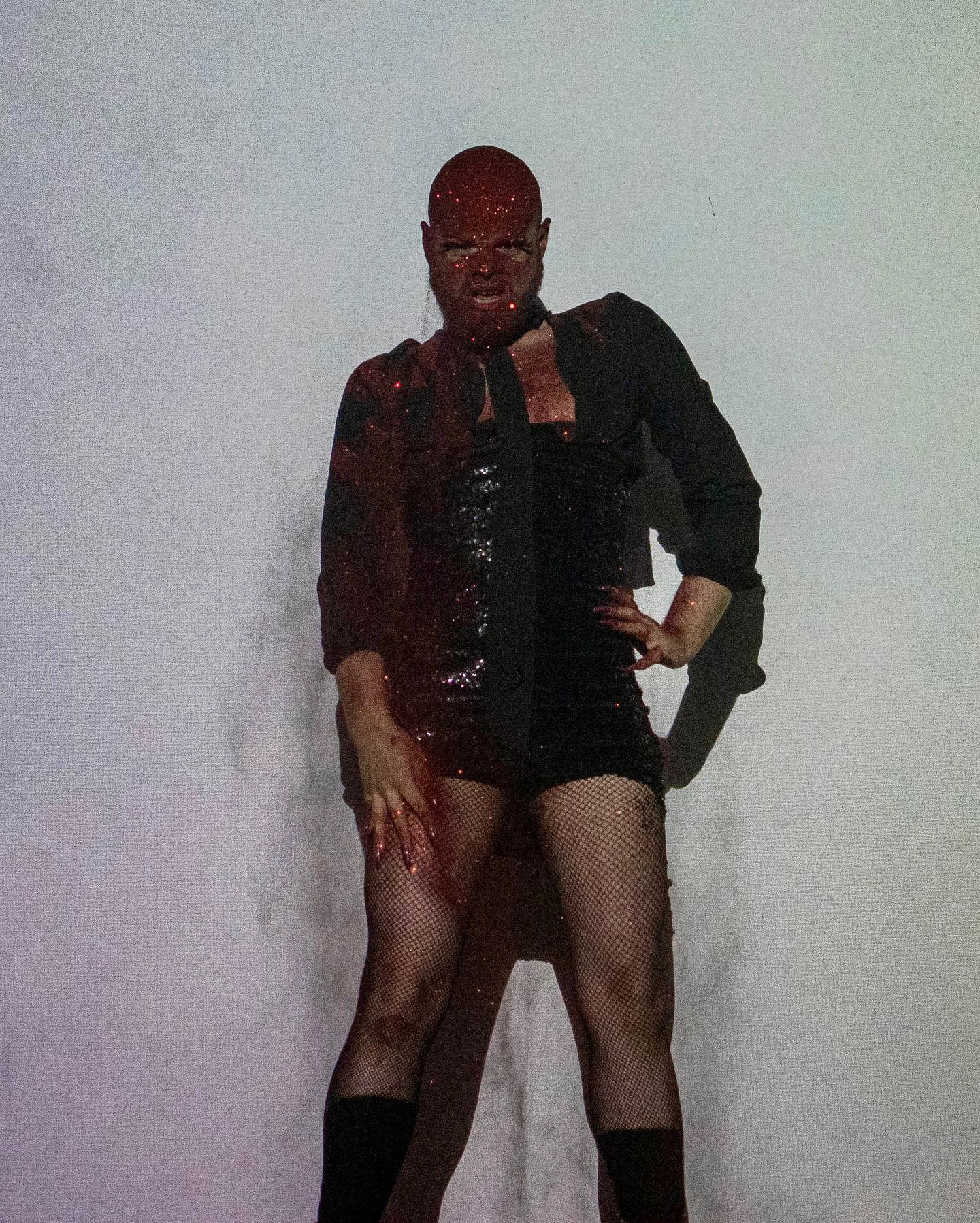
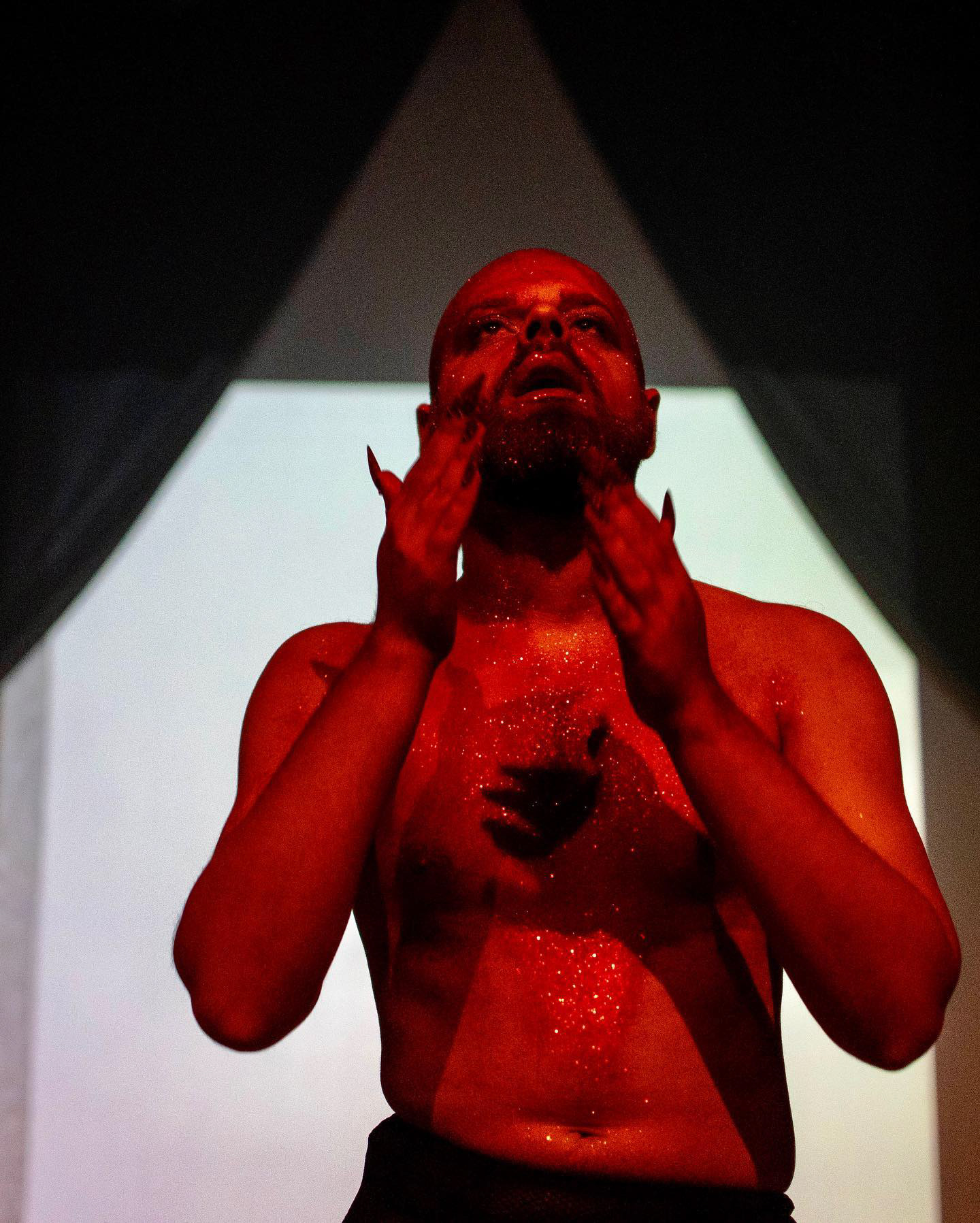

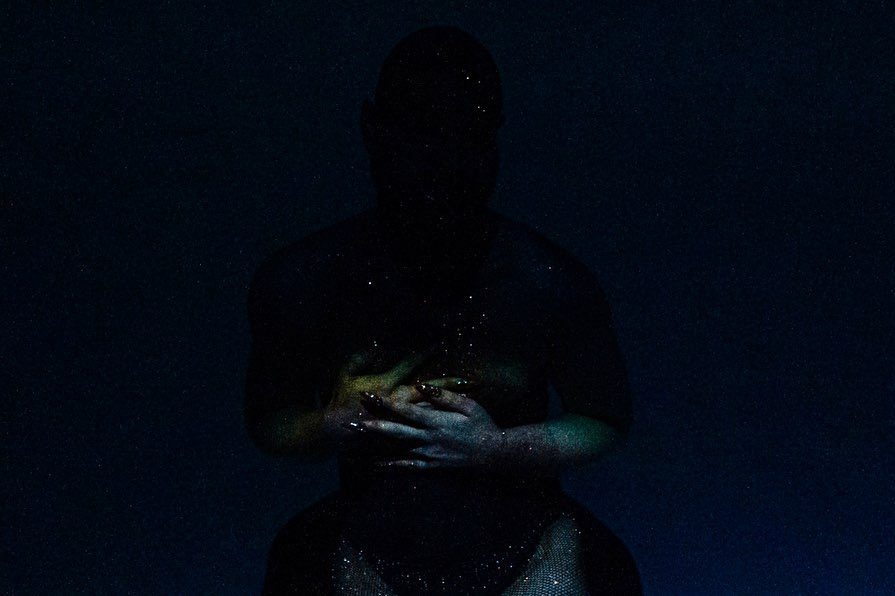
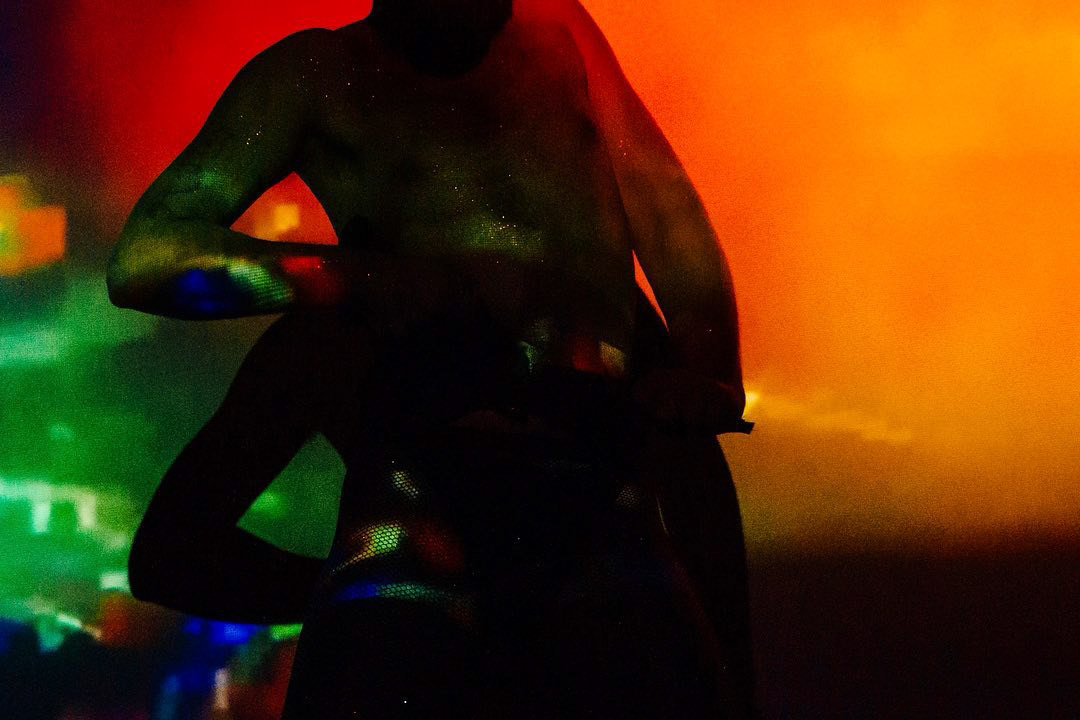
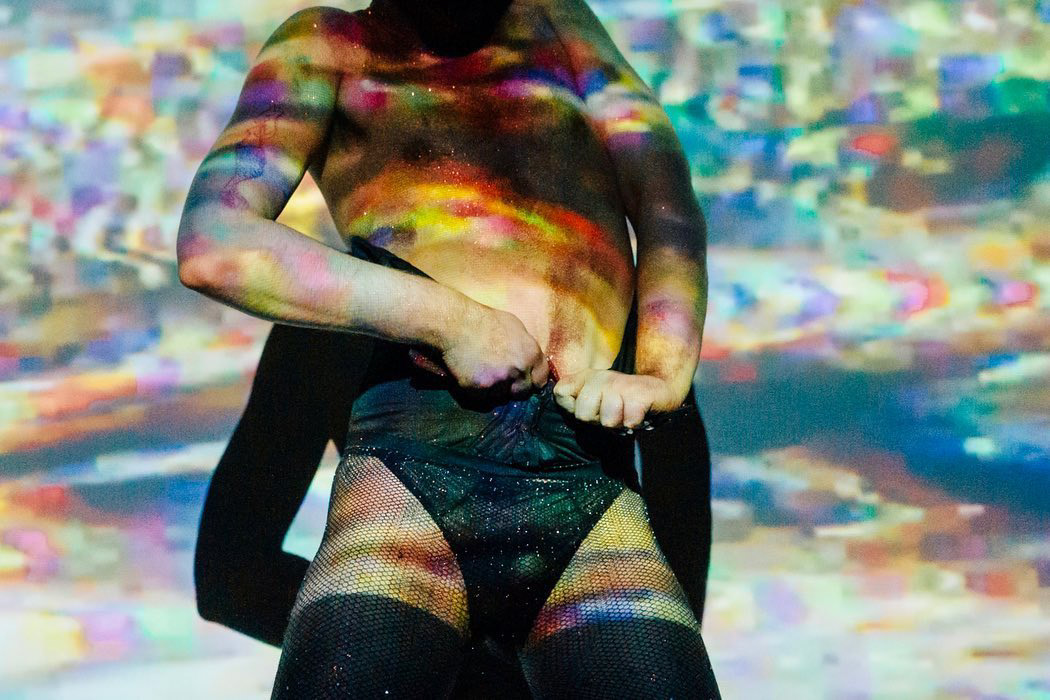
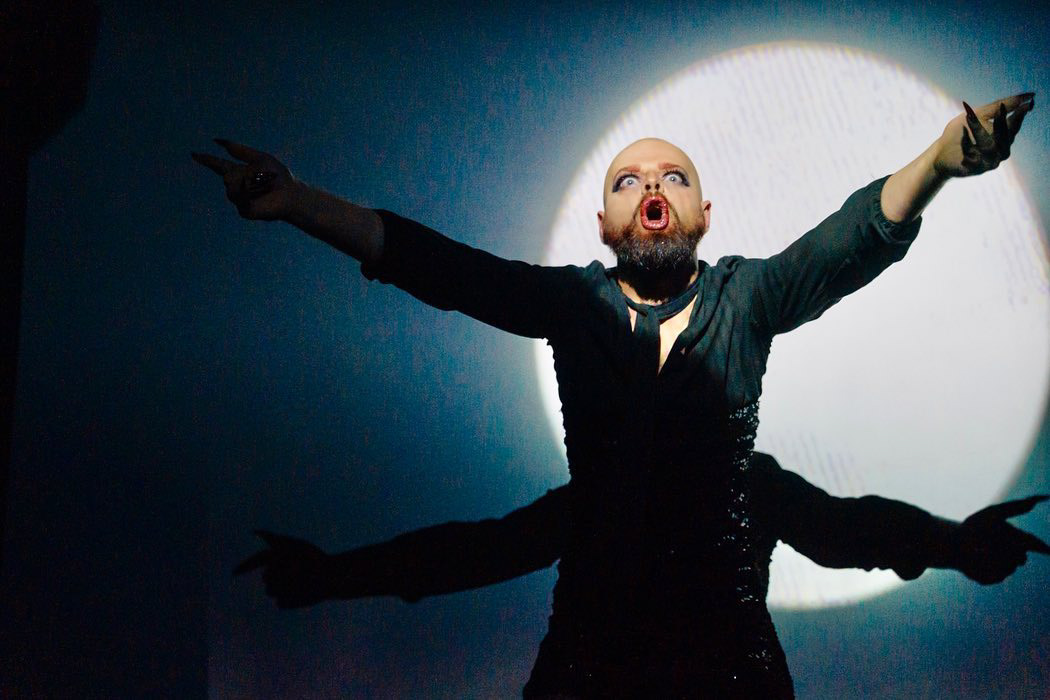
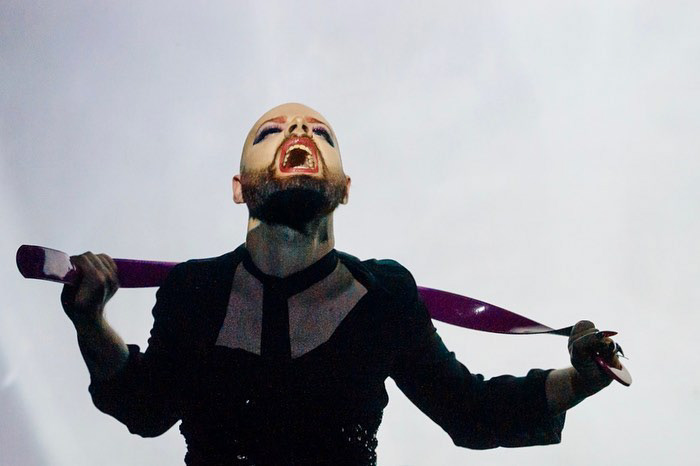
AVE is a performance that detonates into being — a protest wrapped in glitter, rupture disguised as ritual. It begins with the full blast of Maria Peszek’s Ave Maria, reimagined as a queer anthem of defiance and radical self-invention. Simona Kasprowicz steps into the space adorned in camp drag: heavy wigs, shimmering sequins, hyper-feminine distortions. A figure of too-much-ness, shaped from the debris of survival and spectacle.
From the very first beats, the body is framed not for seduction but for undoing. The drag persona is stripped apart piece by piece: wigs are torn away, brocade loosens, makeup smears under stage lights and sweat. But this unlayering does not uncover a pure core — it reveals exhaustion, struggle, the toll of constantly having to survive while performing the acceptable forms of gender, visibility, and beauty.
While the body dismantles its glittered armor, projections flood the space. Figures of Mary and Christ glitch across the performer and the walls — not pristine icons, but corrupted, pixelated, broken. Halos flicker like system errors; sacred imagery dances with the aesthetics of digital collapse. In these moments, Simona’s body becomes part of a larger rupture: queer, trans, femme, wounded, refusing to conform either to martyrdom or to sanitized representation. The sacred and the broken are no longer separate — they bleed into each other.
As the performance moves deeper, the soundscape shifts. The rawness of Peszek’s anthem fades, replaced by the solemn, heavy notes of Bach’s Ave Maria. The lighting thickens, the pace slows. Smoke and glitches remain, but the energy turns inward. In this suspended, almost unbearable stillness, Simona steps into naked vulnerability — physically exposed, yet fiercely guarded by the density of meaning her body now carries.
Standing against the trembling air, Simona speaks the AVE Manifesto — a raw, intersectional litany of refusal. She names the lives and bodies erased from dominant cultural narratives: femmes, queers, migrants, sex workers, neurodivergent people, survivors of violence and systemic abandonment. The words fall like blows, not asking for sympathy but demanding recognition. The manifesto is prayer and protest intertwined — a reckoning carved into breath and bone.
AVE is not a performance that resolves. It does not seek healing as closure. It inhabits the exhaustion of survival, the ache of hope without guarantees. It stakes out a space where vulnerability is sacred, where anger is love made public, and where glitter, blood, glitch, and breath form a liturgy of queer endurance.
Through drag, through collapse, through naked insistence, Simona Kasprowicz remaps the body as archive, as altar, as battleground. AVE is a prayer for those who have been told they do not belong — a performance that refuses to be purified, refuses to disappear, refuses to apologize for existing.